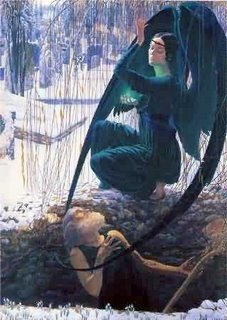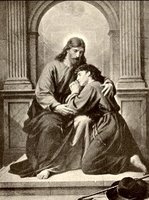
A symbol in literature, as defined by Kennedy and Gioia, is "a person, place, or thing in a narrative [or poem] that suggests meanings beyond its literal sense.
In "A&P," for instance, the store represents more than a grocery store, for it's slogan "We have the best values in town" has a double meaning: in other words, the store is not just a place to buy groceries--the store, along with its manager Lengel, represents the solid community social traditions and moral values. It's more than just a store!

And in "Everyday Use," how about the quilts? Are they just old bed comforters? Or do the quilts, beyond their "everyday use," represent the idea of family values and tradition?
Steinbeck's story "The Chrysanthemums," is rich in symbolism, but let's leave that discussion for the Discussion Board. Happy reading!
Click here for additional readings about literary symbolism.
Question for general Blogservation (comment, in other words, from 1002 students or anyone else visiting the blog who has an opinion or an idea): What are some other common symbols you can think of from any source. . . for example, from our culture? from movies you have seen? from other familiar stories or novels? from music or art?
Painting Credits on this page:
Deathgrave by Carlos Schwabe (above) and Safe in the Arms of Jesus (above right)


No comments:
Post a Comment